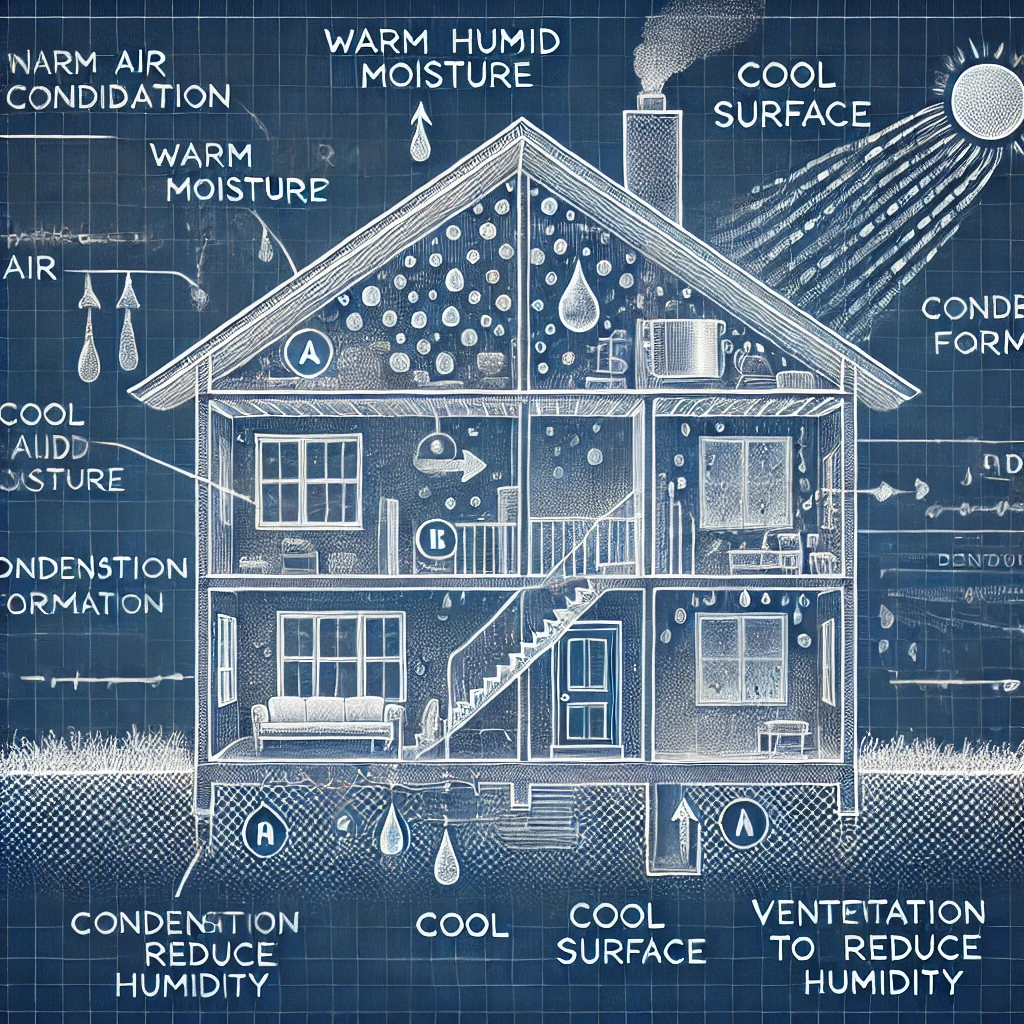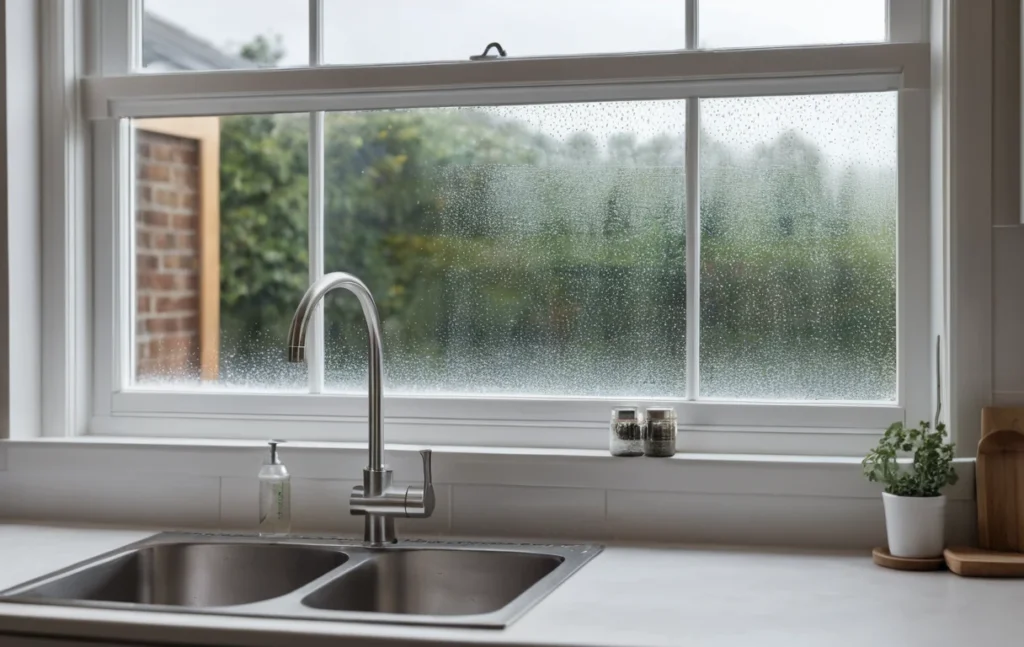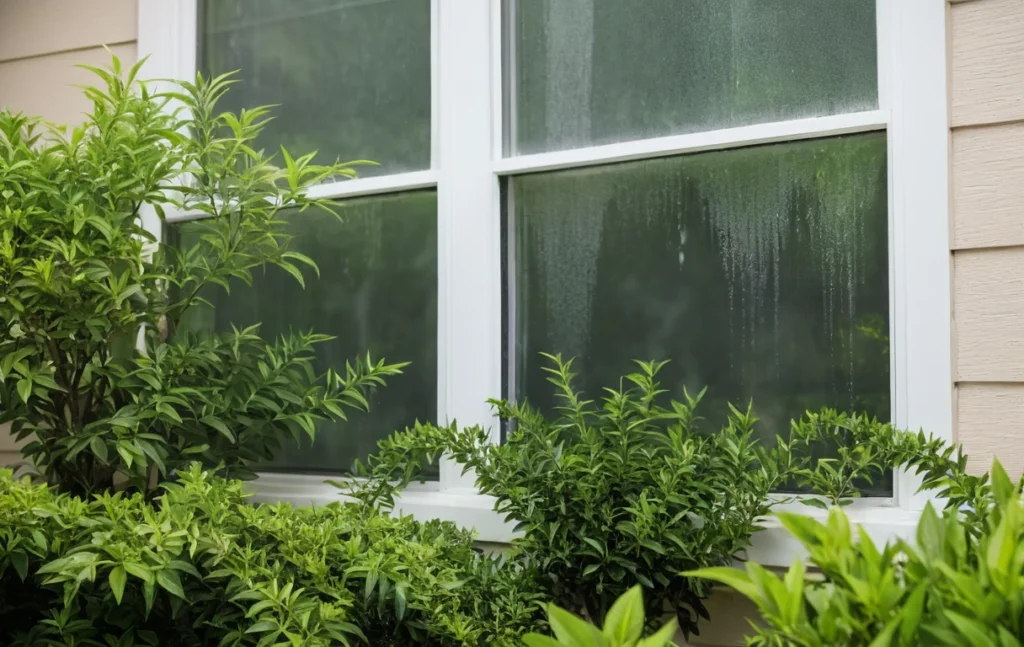What You Should Know About Window Condensation
Window condensation is a common issue that many homeowners face, especially during colder months. While it may seem like a minor nuisance, persistent condensation can lead to mold growth, damage to window frames, and reduced indoor air quality. Understanding the causes of window condensation and how to fix it can help maintain the longevity of your windows and improve your home’s overall comfort.

What Causes Window Condensation?
Condensation occurs when warm, humid air comes into contact with a cold surface, such as window glass. This results in water droplets forming on the glass, much like how a cold beverage develops sweat on a hot day.

Several factors contribute to window condensation, including:
-
- High Indoor Humidity – Everyday activities like cooking, showering, and even breathing increase indoor humidity levels.
-
- Poor Ventilation – Lack of airflow can trap moisture inside the home, exacerbating condensation issues.
-
- Cold Outdoor Temperatures – In colder months, the temperature difference between the indoor and outdoor environment increases the likelihood of condensation.
-
- Inefficient Windows – Older, single-pane, or poorly insulated windows are more prone to condensation due to inadequate thermal resistance.
-
- Tightly Sealed Air-Conditioned Homes – In hot and humid climates like Houston, Texas, a well-sealed and air-conditioned home can create condensation on the exterior of windows, especially near plants and shrubs. When the cool indoor air keeps the window surface cold while warm, moisture-laden outdoor air comes into contact with it, condensation forms on the outside of the glass. This is a sign of energy efficiency, but excessive moisture buildup can lead to streaking and water damage over time.
How to Fix Window Condensation

Reducing condensation on windows requires a combination of managing indoor humidity, improving ventilation, and upgrading to better-insulated windows. Here are some effective solutions:
1. Control Indoor Humidity
-
- Use a dehumidifier to regulate moisture levels in your home.
-
- Keep indoor humidity between 30-50%, especially during colder months.
-
- Run exhaust fans in bathrooms and kitchens while cooking or showering.
2. Improve Ventilation
-
- Open windows periodically to allow fresh air to circulate.
-
- Use ceiling fans to promote air movement.
-
- Consider installing a heat recovery ventilator (HRV) or energy recovery ventilator (ERV) to enhance indoor air exchange.
3. Upgrade to Energy-Efficient Windows
-
- Double or triple-pane windows with Low-E coatings and gas fills (argon or krypton) reduce heat transfer and minimize condensation.
-
- Proper window sealing and insulation prevent drafts that contribute to cold surfaces.
-
- Replace old, inefficient windows with modern, well-insulated models to maintain stable indoor temperatures.
Note: New windows do not completely eliminate condensation, as high indoor humidity levels or extreme outdoor conditions can still cause moisture to form. Proper ventilation and humidity control remain essential for managing condensation, even with high-performance windows.
4. Use Window Treatments Wisely
-
- Open blinds and curtains during the day to allow warmth and airflow to reach the glass surface.
-
- Avoid completely covering windows with heavy drapes that trap moisture.
When to Be Concerned About Window Condensation

Not all condensation is a sign of trouble. If you notice occasional condensation on the outside of your windows, this often indicates good insulation. However, persistent condensation between the panes of double or triple-pane windows suggests a seal failure, which means the window may need repair or replacement.
Final Thoughts
While window condensation is common, it doesn’t have to be a permanent problem. By controlling indoor humidity, improving ventilation, and upgrading to energy-efficient windows, you can reduce or eliminate condensation and protect your home from moisture-related damage. If condensation issues persist, consulting with a professional window expert can help determine the best solution for your home’s needs.

